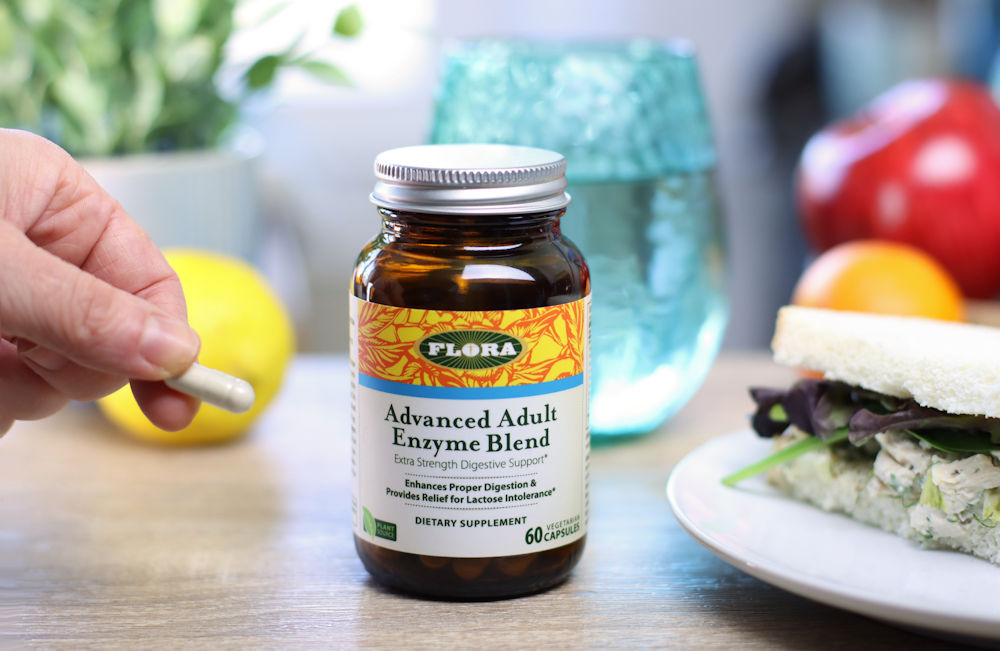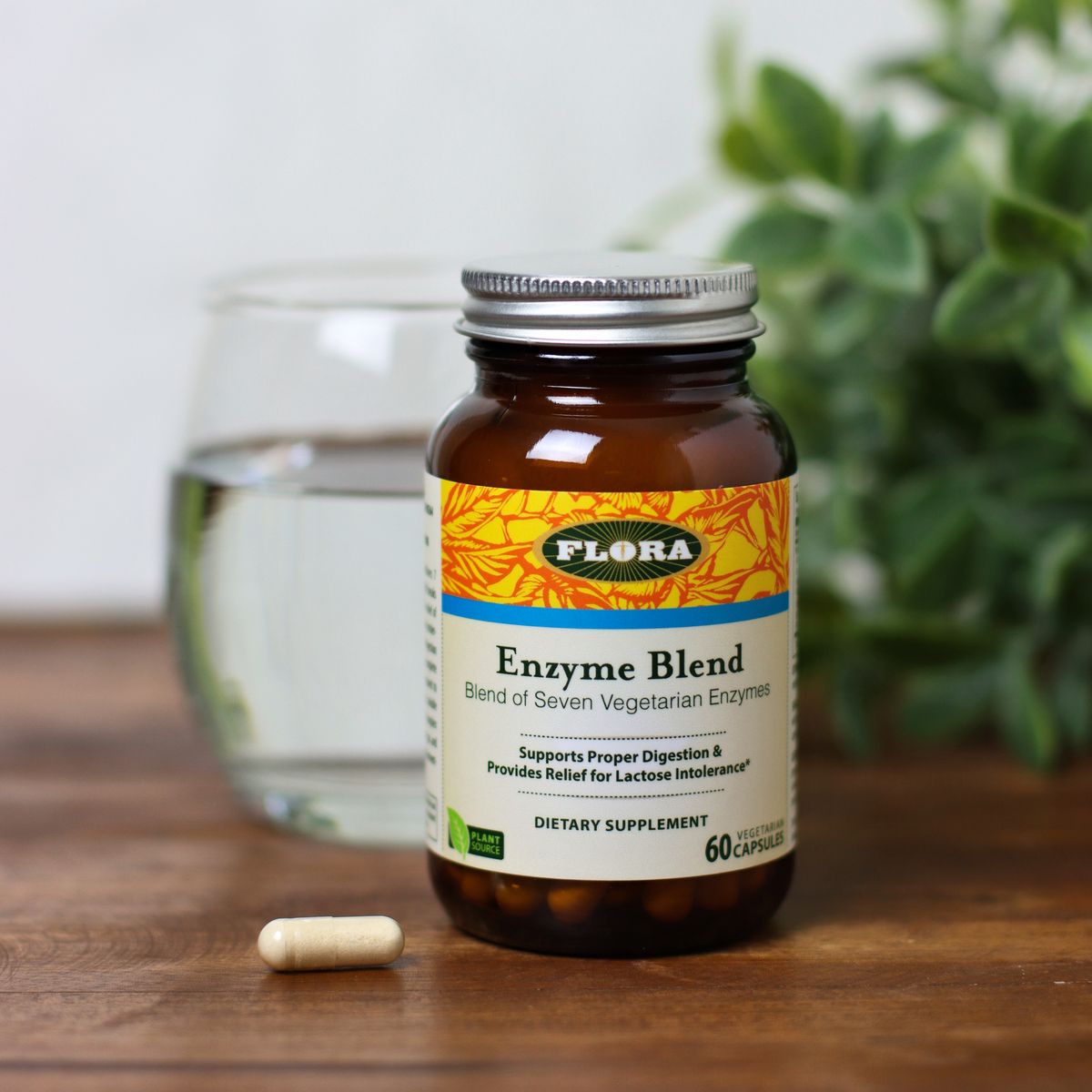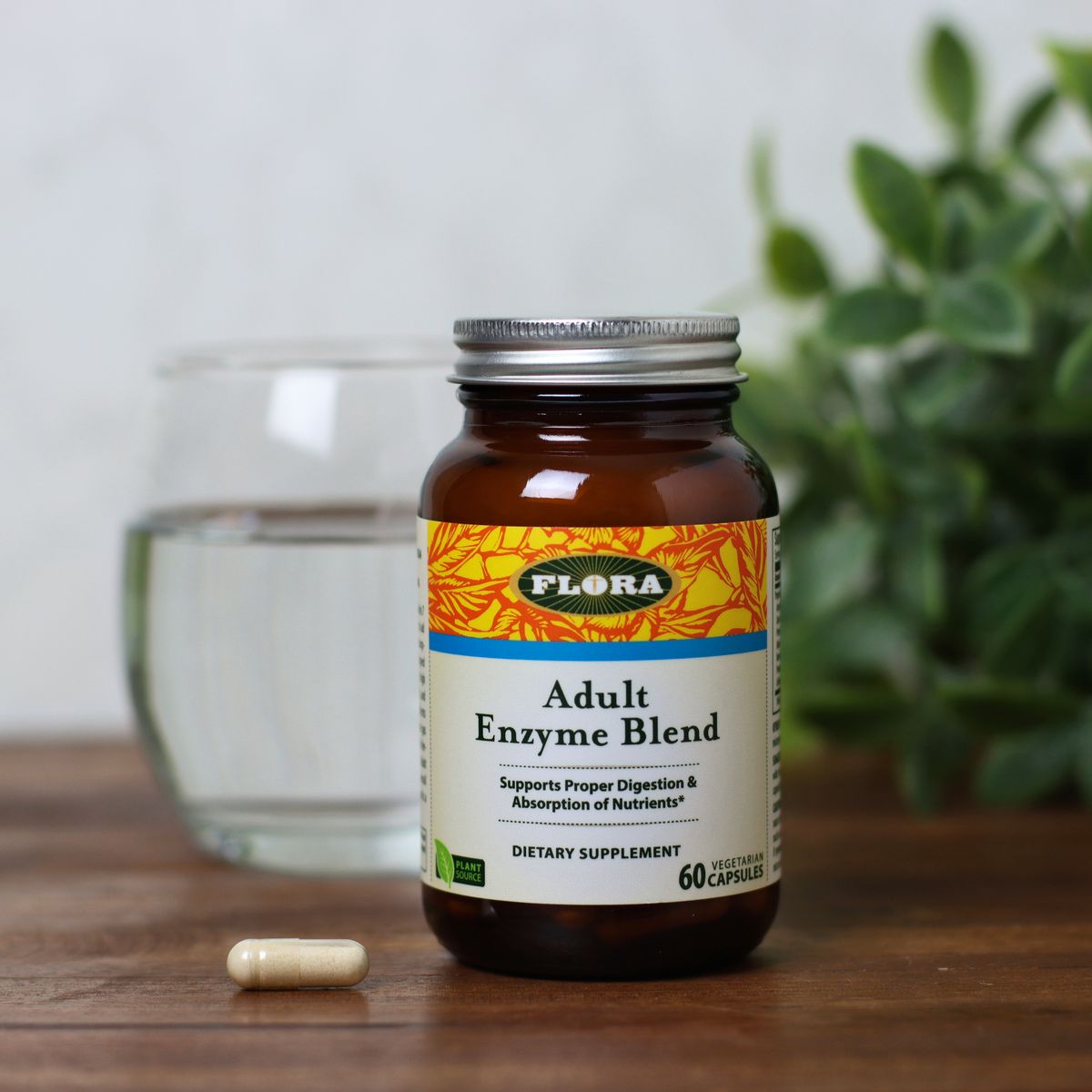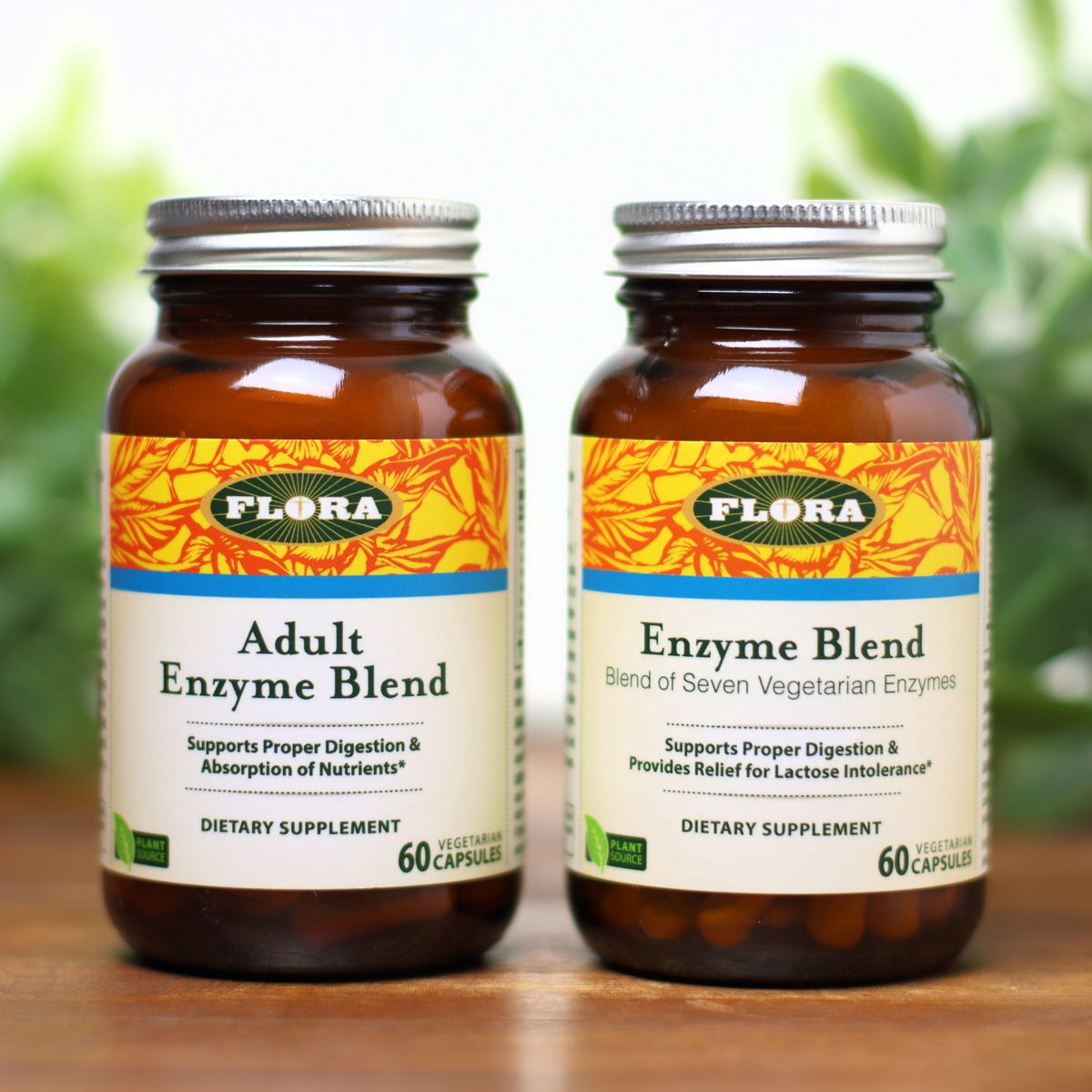Healthy digestion is more than getting food into your stomach to satisfy those hunger pangs. Of course, chowing down on delicious things is part of the fun.
But having truly healthy digestion means you’re breaking down food your body can easily absorb. You then use those nutrients for energy, cell growth, and tissue repair so you stay healthy.
The digestive system, also known as the gastrointestinal tract (GI tract), is basically one long passageway of winding tubes that starts with your mouth and then moves down into your esophagus, stomach, small and large intestines, and eventually out the other end.
Other organs and glands that help our digestion also include the liver, gallbladder, and pancreas.
The Body Digests Food In Three Ways
1. Mechanical Digestion: This is the physical mashing, grinding, and churning of food which helps increase the surface area and breakdown of food readying it for absorption (1).
This action starts in our mouth with chewing and continues in the stomach where it’s prepared for entry into the small intestine where most of our nutrients get absorbed.
2. Chemical Digestion: This is the breakdown of food with the help of digestive juices like stomach acid (important for the breakdown of protein and vitamin B12 and mineral absorption) and bile (fat digestion) which is made by the liver and stored in the gallbladder (2).
The body also gets help from digestive enzymes. Enzymes are catalysts – types of proteins that increase the rate of biochemical reactions.
While there are thousands of types of enzymes in the body, digestive enzymes work to break down proteins, carbohydrates, and fats from macronutrients into smaller compounds – so our body can better absorb the nutrients
Each type of digestive enzyme breaks down a single type of nutrient. A protein-digesting enzyme, for example, will only break down that grilled chicken you had for lunch and never the fat from avocado or French fries. There’s another enzyme for that!
We produce digestive enzymes in the pancreas, stomach, small intestine, and also in our salivary glands. Some get released at the first smell, sight, and even the thought of food.
3. Microbial Digestion: Our guts are host to trillions of bacteria called our microbiome. These friendly bacteria help break down fiber found in foods like fruits and veggies and turn it into short-chain fatty acids (SCFA) which provide a source of energy for the cells like those in your large intestine (3).
Researchers are finding the health of our gut microbiome, while providing our bodies with energy, can affect almost every aspect of our health, including immunity, hormone balance, and mood (4, 5).
When Does Digestive Trouble Start?
While our digestive systems may seem pretty simple, they can easily get thrown out of balance.
Things that can affect our digestion include:
- Eating too many fatty, sugary, and processed foods
- Not eating enough fresh veggies, fruits, and whole grains
- A lack of probiotics and fermented foods
- Too much or too little fiber
- Stress and anxiety
- Artificial sweeteners
- Medications including antibiotics
- Alcohol, smoking, and drugs
- Low immunity
- Food allergies
- Digestive diseases
If you’re frequently experiencing digestive discomfort after eating, your body may have trouble breaking down the foods you’re eating.
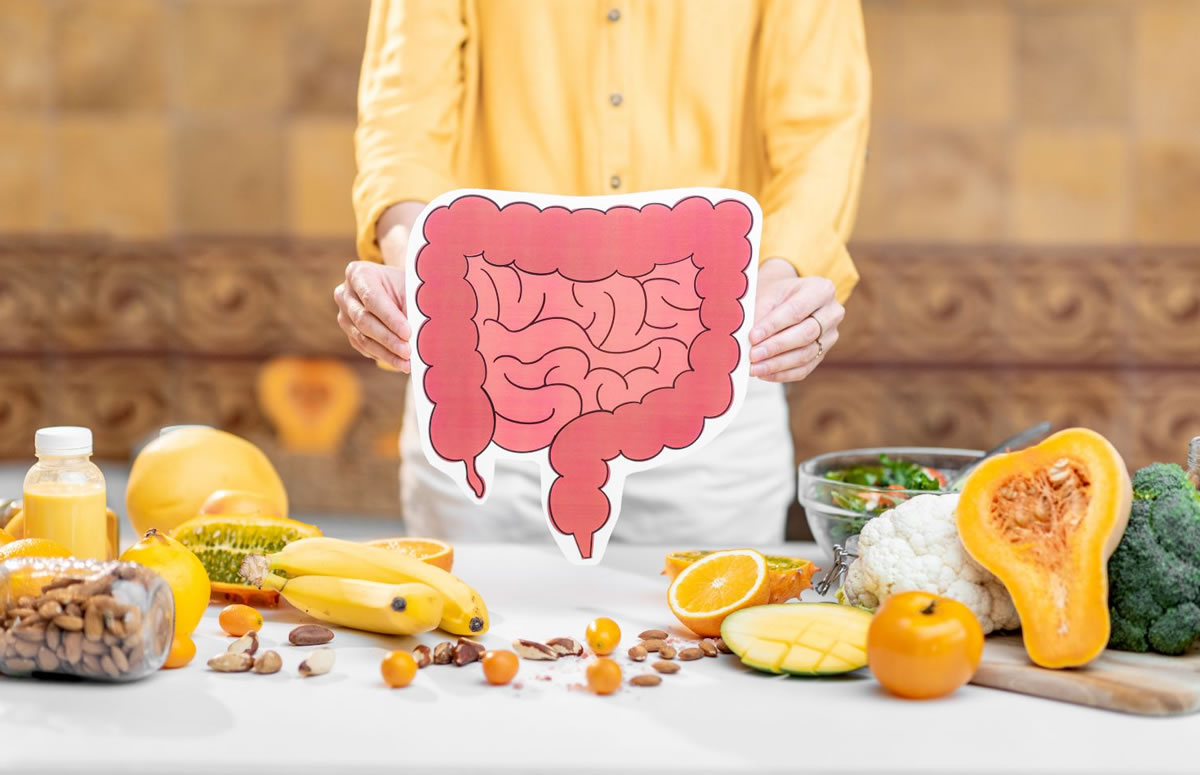
Here Are a Few Signs Your Digestion Could Be Better.
1. You Feel Full of Air (Translation: You’re Gassy)
One of the first signs of digestive issues is if you’re constantly experiencing excessive bloating, belching, or gas after eating. That “full of excess air” feeling can range from mildly uncomfortable to intensely painful.
Some foods, like carbonated beverages, lentils, onions, peas, cabbage, broccoli, and cauliflower, are naturally gassy foods. Overeating or swallowing excess air after eating or drinking too fast, or talking while you’re eating are also normal causes of gas.
But constant bloating and belching after eating can also be a sign of GERD (gastroesophageal reflux disease), a condition that causes stomach acid to move up into the esophagus. Gas at the lower end of your body can also form when your microbiome is unhealthy and out of balance, which can cause it trouble breaking down certain foods.
Another cause for gas: you’re low in certain digestive enzymes. This can cause your body to have a hard time breaking down certain foods, which can cause deficiencies and malabsorption issues down the road.
2. You React Poorly to Certain Foods
If you find certain foods cause you uncomfortable digestive symptoms like bloating, cramping, nausea, diarrhea, food intolerances (sensitivities) or allergies may be to blame.
The symptoms for both can overlap. But they are different.
A food allergy is an immune response to food. Once your immune system detects what it senses as an offending food (even in tiny amounts), it goes on the defense, which can cause a variety of symptoms like itchy mouth, hives, swelling, trouble breathing, cramps, nausea, vomiting, and diarrhea. At their most serious, food allergies can be fatal and trigger anaphylaxis.
Common allergies to food include nuts, eggs, milk, shellfish, soy, and wheat. There is currently no cure for food allergies. You must simply avoid allergic foods.
Food intolerances are a symptom of your body not being able to break down certain foods. Symptoms like gas, diarrhea and cramping are common a few hours after eating. Unlike allergies, food intolerances are not life-threatening and sometimes you can eat a small amount of food you’re sensitive to without experiencing symptoms.
Enzyme deficiencies and sensitivity to food additives can often cause food intolerances.
Lactose intolerance is common, which is the inability to digest the proteins in milk because of a lactase enzyme deficiency.
Other common intolerances include the protein in wheat called gluten and histamines, which are found in foods like wine, avocados, cheese, pineapples, bananas, and chocolate.
If you struggle to digest certain foods and the population of your gut microbiome is unbalanced, you may develop a food intolerance (6).
3. You Have Heartburn (Acid Reflux)
Heartburn is an uncomfortable burning sensation usually felt just behind the breastbone, caused by stomach acid rising into the esophagus. It’s often experienced right after eating. But it can also happen at night when you’re lying down or after you had a meal too close to bedtime.
Heartburn is common if you’re overweight, pregnant, have a hormone imbalance, or are under stress. Fatty, spicy or acidic foods like tomatoes or coffee can also trigger heartburn, as can some medicines like anti-inflammatory painkillers (NSAIDS).
Heartburn that occurs more than twice a week is called GERD (gastroesophageal reflux disease).
Other common symptoms include:
- Feeling like something’s in your throat.
- Difficulty swallowing
- Sore throat or hoarseness
- Coughing
- Chest pain
- Vomiting
If not treated, GERD can cause damage and scarring to the esophagus and irritates the lining of the throat, airways, and even the lungs, which can make breathing difficult. While doctors don’t fully understand the connection, about 75% of people with asthma also have GERD. Researchers believe long-term GERD may increase the risk of esophageal cancer (7).
Be sure to check with a doctor to see what the cause of your heartburn might be.
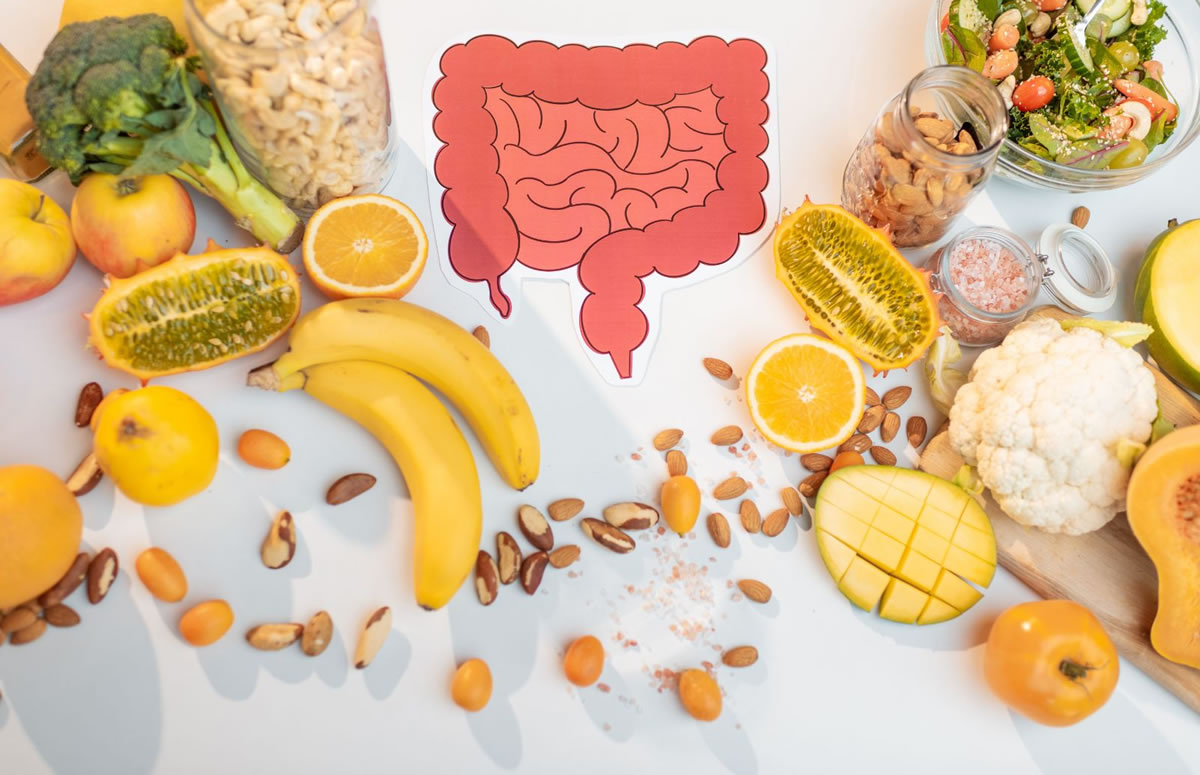
4. You Have Symptoms of Low Stomach Acid (Hypochlorhydria)
It may sound counterintuitive, but symptoms like heartburn can result from your stomach producing too little stomach acid instead of too much. This can create painful bubbles of acidic gas that can rise from the stomach and into your esophagus and throat.
Naturally, our body can produce lower amounts of stomach acid as we age or are under stress. Zinc or vitamin B deficiencies can also cause low stomach acid as can medications like antacids and a bacterial infection H. Pylori which can be a common cause of gastritis and stomach ulcers (8).
Symptoms of low stomach acid include:
- bloating, burping, gas
- heartburn
- upset stomach
- diarrhea
- undigested food in stool
- hair loss and weak, brittle fingernails
- fatigue
- nutrient deficiencies
Poor digestion from too little stomach acid can cause similar digestive symptoms as too much. But it can also result in nutrient deficiencies since we need stomach acid for the breakdown of protein and the absorption of vitamin B12, vitamin C, iron, magnesium, and calcium (9).
5. You’re Regularly Irregular
If you constantly have diarrhea or you’re constipated (more than 3 times a week) that’s a sign your digestion is off.
Foods that are fatty or spicy can easily trigger diarrhea, but frequent or chronic diarrhea can cause dehydration and nutrient deficiencies and result from bacterial infection, yeast overgrowth in the gut, enzyme deficiencies, food intolerances, food allergies, or even digestive diseases like IBS or Crohn’s Disease (10).
If you’re chronically constipated, there may be a deeper issue like IBS. Some medications can also cause constipation (11).
Both diarrhea and constipation may also indicate a poor microbiome, which is common after antibiotic use (12).
6. You Have Undigested Food in Your Stool
Normally, it takes about 24 to 72 hours for food to pass through the digestive tract. If that lunch you had yesterday looks pretty much intact on the way out, it could be a sign that your body is having trouble breaking down certain foods.
Some high-fiber vegetables like peas, carrots, and corn contain an indigestible fiber called cellulose, that the human body can’t break down.
Undigested food can also be a sign you’re not chewing properly or you’re eating too fast. If that happens often, along with diarrhea or weight loss, you may be not absorbing nutrients properly. This could be a sign of a more serious condition like celiac disease, Crohn’s disease, or problems with your pancreas.
All diseases causing malabsorption can cause undigested food particles in the stool, so it’s best to see your doctor to get to the root cause.
7. You Often Have an Upset Stomach
We all get a tummy ache now and then. But if you’re frequently nauseous, your digestion may need some help.
Eating spoiled food can cause nausea, as can a lack of digestive enzymes, food intolerances, and poor quality of bacteria in the gut can all cause nausea (13).
Here Are Some Things You Can Do To Support Better Digestion
For any serious pain or symptoms that don’t seem to improve, be sure to consult with your doctor to get to the root cause of your digestive issues.
Eat more fruits, vegetables, and whole foods
Processed foods lack nutrients and can cause digestive issues or make them worse. High-fiber plant-based foods and lean proteins nourish your body and support healthy digestion.
Eat Slowly
Take time to eat slower and chew your food well to help your body break down your food easier and absorb more nutrients.
Drink lots of water
Water is essential for a healthy body and keeps your digestion moving. It aids in nutrient absorption and the breaking down of food.
Exercise regularly
Exercise improves blood flow to the digestive system, which not only nourishes organs and keeps them healthy but also supports a healthy metabolism.
Get plenty of sleep
Studies show sleep can help the body produce the hormones like melatonin and prolactin, which support a healthy microbiome and good digestion.
Lower your stress
Stress is a common cause of digestive upset. Try easing stress levels with regular exercise, spending time with loved ones, meditation, and taking time to do fun things.
Figure out Your Food intolerances
If certain foods always cause distress, try an elimination diet to determine your trigger foods. Get the help of a physician immediately if you suspect you have food allergies.
Eat More Probiotic-Rich Foods
Foods like sauerkraut, yogurt, kefir, miso, kombucha, and kimchi contain naturally friendly bacteria that support good gut health and healthy digestion. For more intensive support, add a probiotic supplement to your daily routine.
Try Taking Digestive Enzymes Before You Eat
Supplementing with digestive enzymes can often ease uncomfortable digestive symptoms like bloating and gas while helping you absorb more nutrients from your food.*
Enzymes in the body include:
Amylase: Released by the salivary glands and the pancreas, amylase breaks down starches.
Lipase: Made by the pancreas, mouth, and stomach, this enzyme breaks down fats.
Protease: Proteases break down proteins into peptides and then amino acids.
Alpha-galactosidase: This enzyme works on digesting complex sugars like those found in beans and cruciferous vegetables that can cause gas and bloating.
Lactase: This enzyme is required to digest the natural sugar found in milk called lactose.
Quality digestive enzyme formulas should:
- Include a wide variety of enzymes to help break down a variety of different foods
- Should show the potency of an enzyme measured in units like HUT (for protease), ALU (for lactase), DU (for amylase), FIP (for lipase), etc.
- Be free of added ingredients like preservatives and allergens that may trigger digestive symptoms.
For a comprehensive digestive enzyme formula designed to support healthy digestion, try Enzyme Blend from Flora. *
Enzyme Blend includes:
- A variety of enzymes including bromelain, protease 4.5, amylase, lipase, and lactase to support optimal digestion of proteins, fats, carbohydrates, fiber, and complex sugars*
- Support for maximum nutrient absorption*
- An allergen-free formula that’s Gluten-Free + Non-GMO + Vegetarian
➡ Buy Flora Health Enzyme Blend
For a more potent formula try Advanced Adult Enzyme Blend from Flora.
This full-spectrum vegetarian enzyme blend includes a variety of enzymes including bromelain, protease 4.5, protease 6.0, amylase, lactase, and lipase to aid in the digestion of proteins, fats, dairy, and carbohydrates.*
- It significantly reduces symptoms associated with lactose intolerance*
- Has 50% more lipase than the Adult Enzyme Blend to help improve fat digestion*
- Is ideal for adults over 65
- Is Gluten-Free + Non-GMO + Vegetarian
➡ Buy Flora Health Advanced Adult Enzyme Blend
It’s best to take your digestive enzymes just before you eat. You can also sprinkle them over the top of your food before eating.
Want To Get Your Digestion Back on Track?
Visit FloraHealth.com to learn more about the importance of digestive enzymes or to order Enzyme Blend or Advanced Adult Enzyme Blend to support your digestion.
➡ Buy Flora Health Enzyme Blend
➡ Buy Flora Health Advanced Adult Enzyme Blend
*These statements have not been evaluated by the Food and Drug Administration. This product is not intended to diagnose, treat, cure, or prevent any disease.
